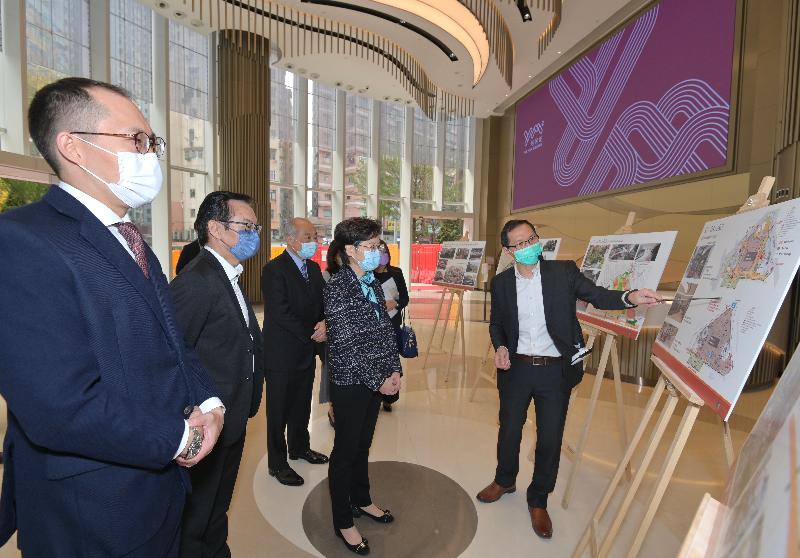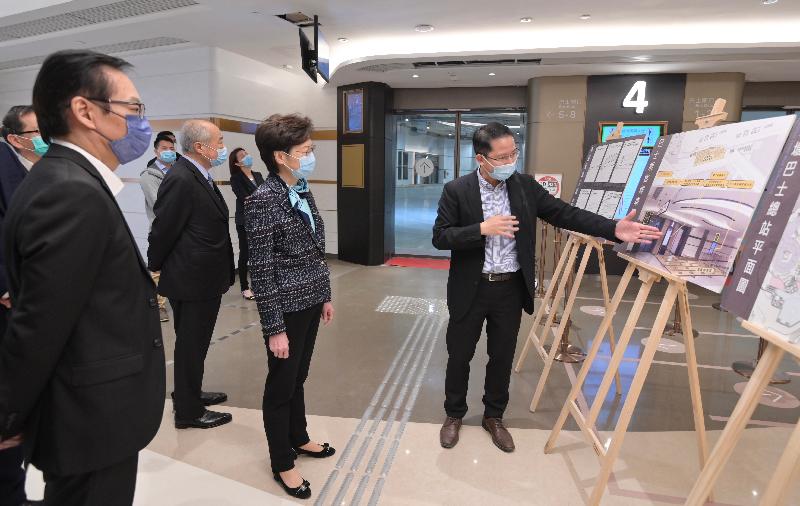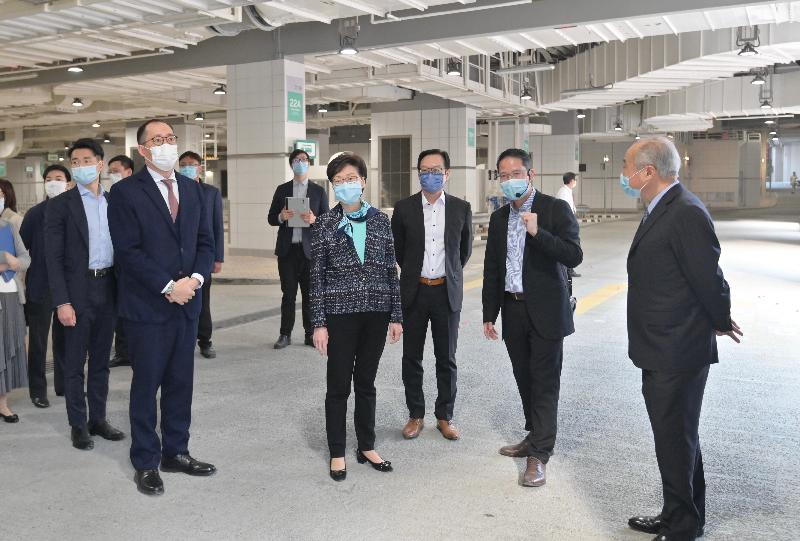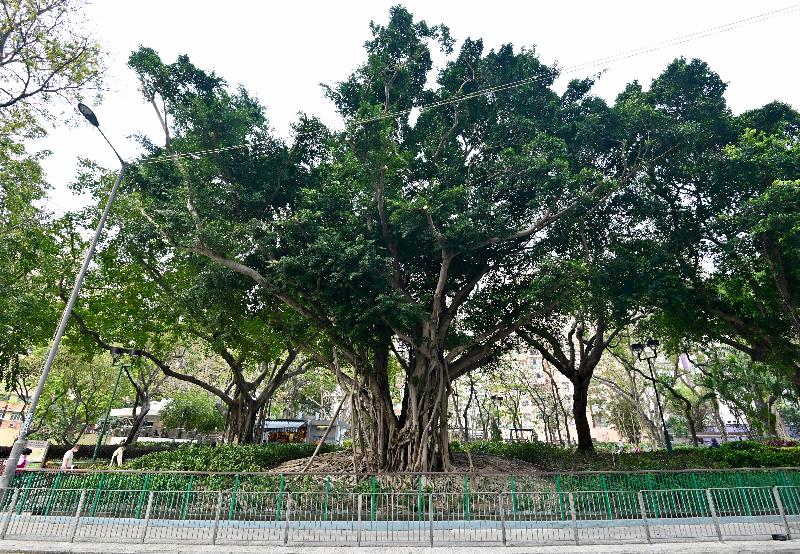The Chief Executive, Mrs Carrie Lam, accompanied by the Urban Renewal Authority (URA) Board Chairman, Mr Chow Chung-kong, and the URA's Managing Director, Mr Wai Chi-sing, today (March 24) visited Kwun Tong to inspect the newly completed Yue Man Square Public Transport Interchange (PTI), which will commence operation shortly. As one of the important facilities of the URA Kwun Tong Town Centre redevelopment project, it will be the largest covered PTI in Hong Kong. The bus terminus is located on the first floor of the project’s podium and the minibus terminus is on the ground floor, with multiple entrances and exits connecting to the shopping arcade and streets nearby. The PTI will commence operation next Friday (April 2).
Mrs Lam said she was pleased to note that the new PTI has leveraged various innovative and smart elements, including the application of the idea of separating pedestrians and vehicles in setting up Hong Kong's first air-conditioned waiting area and the artificial intelligence-operated gate control system at the bus terminus, and the installation of smart ventilation facilities researched and developed by local enterprises at the minibus terminus, providing a better waiting environment and convenience for passengers. To tie in with the Government’s policy in promoting electric vehicles, charging facilities for minibuses will be provided at the minibus terminus.
The Kwun Tong Town Centre redevelopment project is the biggest redevelopment project of the URA, with the site, spanning more than 50 000 square metres, involving more than 1 600 private property titles and 3 000 residents. The total development cost amounts to tens of billions of dollars. The redevelopment area held a number of facilities providing public services including government offices and a health centre which required appropriate reprovisioning during the redevelopment period. The relocation of a Chinese banyan tree which had accompanied local residents of Yuet Wah Street for several decades also took tremendous effort. Taking into account the huge size of the project, the URA adopted a planning-led and district-based approach in taking forward the project. Capitalising on the redevelopment opportunities, the URA has replanned the traffic routes, pedestrian facilities and green and leisure spaces to create a more people-oriented community and bring greater benefits to residents.
"During my tenure as the Secretary for Development, I personally supervised the Kwun Tong Town Centre redevelopment project and also conducted several site visits to inspect the work progress, including viewing the relocation of the Chinese banyan tree at midnight in May 2011, the memory of which remains fresh in my mind today," Mrs Lam said.
"The Kwun Tong Town Centre redevelopment project has been in progress for more than 10 years and facilities in various phases have been commissioned gradually. It is an extremely arduous project and it is expected to be fully completed by 2029-30. This redevelopment project has not only improved the living environment of residents in an old district, but has also transformed Kwun Tong into a more liveable and work-friendly district, adding colour to the Energizing Kowloon East project. I commend the URA Board and staff members for their hard work."
Mrs Lam subsequently viewed the site of the new Civil Service College nearby and was briefed by the Secretary for the Civil Service, Mr Patrick Nip, and the Director of Architectural Services, Ms Winnie Ho, on the design of the project. The Chief Executive announced in the 2018 Policy Address that a site in Kwun Tong had been identified for composite development under which two buildings, a high block and a low block, were planned to be built. The high block, which will have a net operating floor area of about 15 000 sq m, will mainly house the Civil Service College and other civil service facilities and will be equipped with better and more diversified facilities for civil service training, while the low block will mainly provide social welfare and community facilities to serve the residents in the district. The composite development will also provide elevated walkways, public open space and a landscaped deck to enhance walkability in the area. If funding for the project is approved next year, it can be completed in phases from the end of 2026.
Follow this news feed: East Asia










